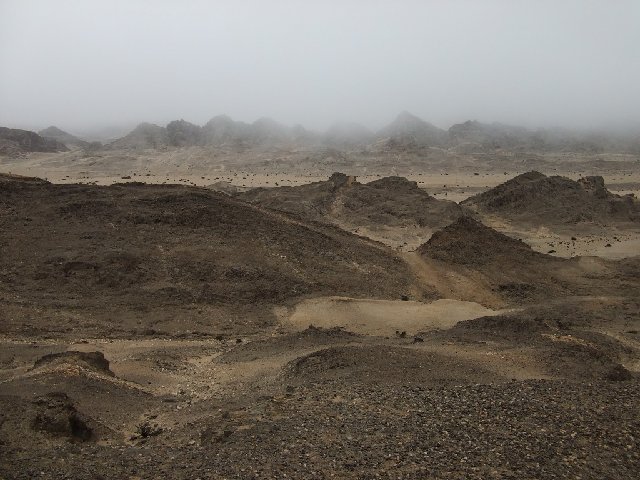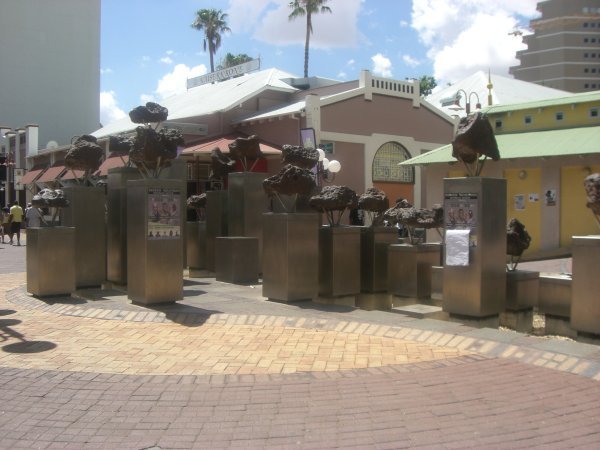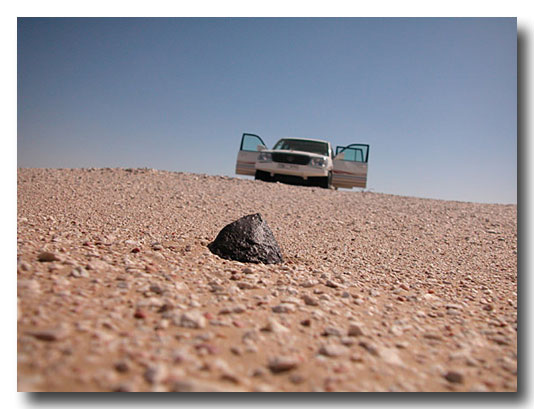
|
|
||
| The Gibeon Meteorite | ||
|
|
||
| Meteorite
Type: Iron Group: IVA Structural Class:ification: Fine Octahedrite Location: Great Namaqualand, Namibia Fall Date: 4,000-10,000 years ago Discovered: 1838 Total Known Weight: 26,000 Kg |
||
|
|
||
| The Gibeon meteorite
shower is the most extensive meteorite shower known on Earth which
covers a large elliptical area of some 275 by 100 kilometers centered
on Brukkaros south of Mariental. Most fragments fell just southeast of
Gibeon. To date, some 120 specimens with a weight of almost 25 tons
have been recorded. In addition an unknown number have been collected
but never recorded. Small pieces of metal
were collected by James Alexander in 1838 at a place about three days
journey northeast
of the mission at Bethany. He described the pieces as being up to two
feet square, and sent some materials to the chemist John Herschel in
London, who established their meteoritic origin. However, it is well
known that the local Nama people had been using the meteorites for a
long time to produce spear points and other weapons. The first large piece of some 81 kg was carried by ox-wagon for 800 miles to Cape Town by John Gibbs before 1853. From there it was sent to London, where the mineralogist to Queen Victoria, Professor John Tennant, purchased it. He forwarded it via New York to Professor Charles Shepard of Amherst College in Massachusetts, who studied the material in detail. By 1910, at least ten pieces of the Gibeon Meteorites had been shipped to Europe. From 1911 to 1913, the geologist of the German colonial administration, Dr Paul Range, collected all the remaining meteorites he could find and mapped their occurrence. The specimens were displayed in Windhoek, and a number of them were also donated to various museums around the world. The Gibeon Meteorites occur partially embedded in rocks of the Karoo Sequence and calcretes of the Kalahari group. It has been calculated that a meteorite body, measuring roughly 4 by 4 by 1.5 meters must have entered the Earth's atmosphere along a northwesterly trajectory and at a low angle of 10` to 20` from the horizon. This body fragmented while still high in the atmosphere, so that the fragments themselves suffered thermal alteration by melting of the outer surface. This either covered the fragments in smooth outer layers, or was pulled off in places by the drag of the atmosphere, leaving an uneven mass with deep, spherical cavities on the outer surface. These well-developed thermal alteration structures prove that the fragments had an extended flight through the atmosphere before being deposited. The varieties of thermal and shock-induced microstructures of the Gibeon Meteorites are the greatest in the world an only matched by the Canyon Diablo Meteorite of northern Arizona. |
||
|
|
||
 |

|
 |